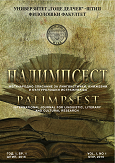GENDER SENSITIVE LANGUAGE IN THE MACEDONIAN JOB ADVERTISEMENTS
DOI:
https://doi.org/10.46763/PALIM24917035jAbstract
In the past few years, there is an intensified gender sensitive language discussion in Macedonia as well, which increases the women’s visibility and overcomes the patriarchial pattern according to which the male has a superior and the female inferior role.
This paper poses two research questions: Whether the gender sensitive language is used in the job advertisements? and What type of gender sensitive language is used when certain occupation is advertised? The aim is to get general insights of the gender sensitive language used in the advertisements, bearing in mind that they use nouns which denote occupations and describe the preferred characteristic of the persons. The sample consists of 500 job advertisements, and the analysis includes the coding and the general qualitative inductive-interpretative method.
The results show that most job advertisements use the generic masculine form which contributes to the woman’s invisibility in the society. The same counts for the additional information on the conditions that a person should fulfill and his characteristics, which are also given in masculine. The results point to the smaller number of advertisements in which the feminine noun is used, which additionally affects the woman’s underrepresentation in the society. Yet, there are advertisements which use the feminine forms, independently or in word pairs and the gender neutral noun person. This indicates that there is an increased consciousness for gender neutral language through the language as well.
Keywords: gender sensitive language; job advertisements.


